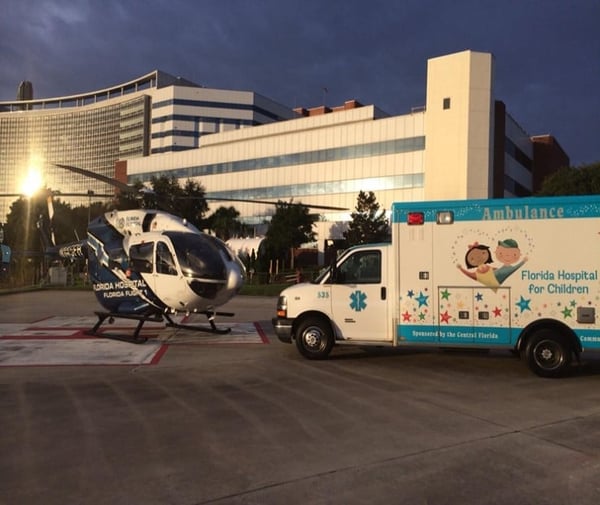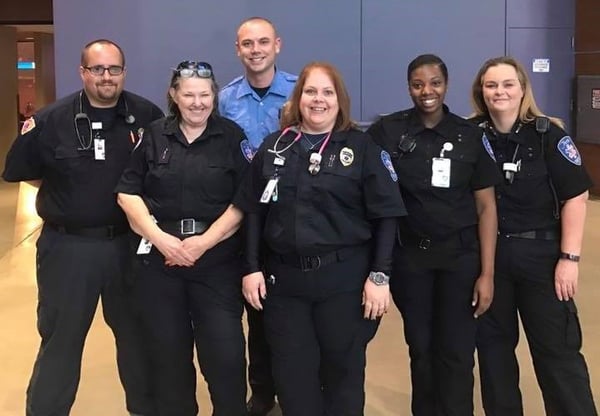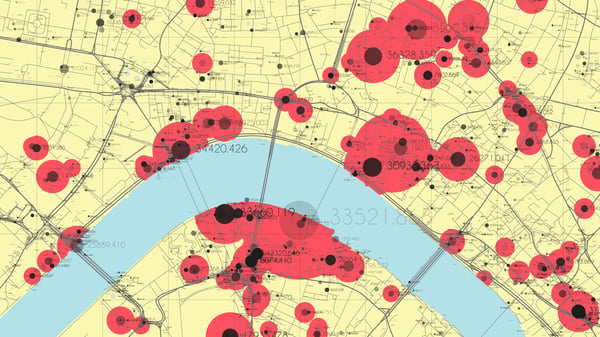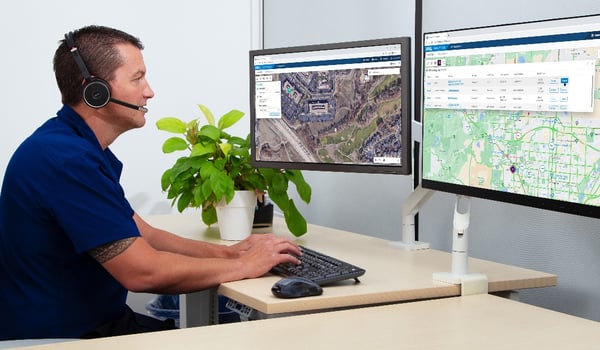4 Must-have Data Points for Dispatch-Billing Alignment and Maximum Reimbursement
Bookmark These 8 Blog Posts on How to Enhance Safety
We all struggle with information overload in our inbox and on our social networks
Was this information valuable?

We all struggle with information overload in our inbox and on our social networks. That being said, I won’t take it personal if you missed one (or all) of the NINE blog posts ZOLL published in June focused on providing you tips and insight to enhance safety within your EMS agency. Instead, I’ll try to make it easy for you. Below is a compilation of everything you may have missed while you were too busy kicking butt at your job. Perhaps you’re not quite ready to start writing that grant, or you’re still thinking about a driver feedback tool such as Road Safety. I encourage you to bookmark the posts that are most relevant to you; that way, you’ll have easy access to it/them once you are ready.
1. Lights and Sirens: Does Speed Really Save Lives?
The most unsafe aspect of working in EMS is being in an ambulance while it’s operating in a lights and sirens – or emergent – mode. The statistics have painted a concerning picture of this danger. Ambulance crashes account for nearly 54 percent of the fatalities in EMS and 58 percent of those are while responding emergent, according to the National Highway Traffic Safety Administration (NHTSA). The costs associated with these events can cripple a business for years. Could these fatalities and rising costs be prevented?
2. How Florida Hospital Closed the Divide Between Air & Ground EMS
 I came to ground EMS from flight. After four years as a flight nurse and more than 28 years as a nurse, my transition was eye opening to say the least. Because of the higher risks associated with helicopter transport, it’s imperative that safety drives air operations for EMS. One of the first things I noticed when I began managing ground EMS is the difference in culture of safety adoption. I quickly began to wonder what it would take to get our ground EMS operations to take safety protocols as seriously as we did in the air.
I came to ground EMS from flight. After four years as a flight nurse and more than 28 years as a nurse, my transition was eye opening to say the least. Because of the higher risks associated with helicopter transport, it’s imperative that safety drives air operations for EMS. One of the first things I noticed when I began managing ground EMS is the difference in culture of safety adoption. I quickly began to wonder what it would take to get our ground EMS operations to take safety protocols as seriously as we did in the air.
3. Proactively Equip Staff with Tools & Education to Change Behavior & Limit Accidents
Every day, our patients and the public entrust EMS professionals to drive our vehicles safely in performance of our mission. However, if we are candid, we can look at our driving performance as a profession and see incidents where we haven’t always earned the privilege of that trust. When agencies experience a catastrophic accident, the repercussions are profound, and can persist for years. Not every incident is preventable, but it’s imperative that we equip our front-line staff with tools and education to avoid preventable incidents. At Robert Wood Johnson University Hospital Mobile Health Service (RWJUH-MHS), we decided it was time to take a closer look at how we can best meet this imperative, for the safety of our patients, staff and community.
4. Are You Disaster Prepared?
The 2017 Hurricane season began on June 1 and goes to November 30. The National Oceanic and Atmospheric Administration (NOAA), Colorado State University and the Weather Co. are all predicting an above normal hurricane season. That being said, are you prepared? AAA Ambulance Service, based in Hattiesburg, Mississippi, has survived through four major disasters; and our IT Design enhanced after each one to protect our data, our hardware, and most importantly, to help protect our communities. Find out our lessons learned.
5. Struggling to Find Funding for Your EMS Agency? Apply for a Grant
Many of us in the fire and emergency medical service (EMS) industry are familiar with the process of searching for a funding source once a need has been identified. In an ideal world, all of us would have the budget capacity available to meet each goal every fiscal year. In reality, each agency must carefully weigh where to invest budget money to have the greatest organizational impact, while remaining accountable to ownership, shareholders, or in our case, the taxpayers. Budget requests such as personnel and vehicles are easy to demonstrate the need for; and if your organization has the funds available, they are generally approved.
6. 5 Ways to Guarantee a Culture of Safety “Sticks”
 The term, “Culture of Safety” seems to be at the forefront of EMS blogs and discussions. Every time you log onto a social media page or check out an EMS publication, it seems we’re always talking about a near-miss or a motor vehicle collision involving an ambulance. Unfortunately, the implementation of safety devices on our ambulances is often seen as a punitive measure; an easy way to bring disciplinary action or terminations against our staff. New to the idea of a culture of safety? Or perhaps it’s been on your radar for a while, but you haven’t figure out how to try create a sustainable plan to get there?
The term, “Culture of Safety” seems to be at the forefront of EMS blogs and discussions. Every time you log onto a social media page or check out an EMS publication, it seems we’re always talking about a near-miss or a motor vehicle collision involving an ambulance. Unfortunately, the implementation of safety devices on our ambulances is often seen as a punitive measure; an easy way to bring disciplinary action or terminations against our staff. New to the idea of a culture of safety? Or perhaps it’s been on your radar for a while, but you haven’t figure out how to try create a sustainable plan to get there?
7. Avoid Secondary Crashes & Improve Safety with Proper Training
Three injury crashes occur every minute in the United States, putting nearly 39,000 EMS responders in harm’s way each day, according to the Federal Highway Association (FHWA). Secondary crashes are often the result of the congestion caused by the incident. Thanks to the efforts of the FHWA and the emergency responder stakeholders that make up the Executive Leadership Group for the Traffic Incident Management (TIM) program, move-over and quick clearance laws for police, fire trucks and ambulances now exist in every state and require drivers to change lanes or slow down to 10 to 25 miles per hour, depending on the state. However, this isn’t always enough to keep responders safe; the longer they remain at the scene, the greater risk they face. How can you minimize the time and resources required to clear an incident?
8. Are Your Insurance Premiums Skyrocketing? Learn How Road Safety Helped My Agency
Safety at Butler Medical Transport drives savings and is a necessity to keep our financial house in order. With 80 vehicles operating in three states, we didn’t wake up one day and decide Butler wants to be a safer company; we decided we needed to save money because our insurance premiums had been creeping up year over year in the double digits. It got to the point where we were paying $10,000 per year just to insure each vehicle. We were a disaster on wheels, and there wasn’t an insurance company that would touch us. Even our current insurance provider sent us a cancellation notice. And it was all because we chose to turn a blind eye to the cause of our accidents.
Related Posts
How EMS Agencies Can Reframe Need and Refocus Resources With Geospatial Analytics
How To Minimize Radio Chatter and Reduce Guesswork With Smarter Dispatch Resource Management
ZOLL Pulse Blog
Subscribe to our blog and receive quality content that makes your job as an EMS & fire, hospital, or AR professional easier.
ZOLL Pulse Blog
Subscribe to our blog and receive quality content that makes your job as an EMS, fire, hospital, or AR professional easier.




